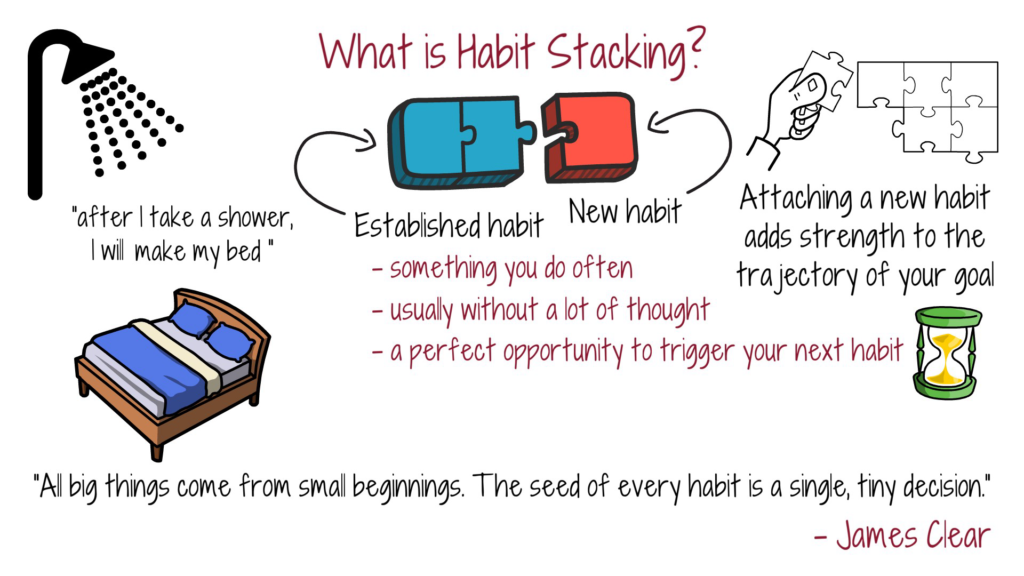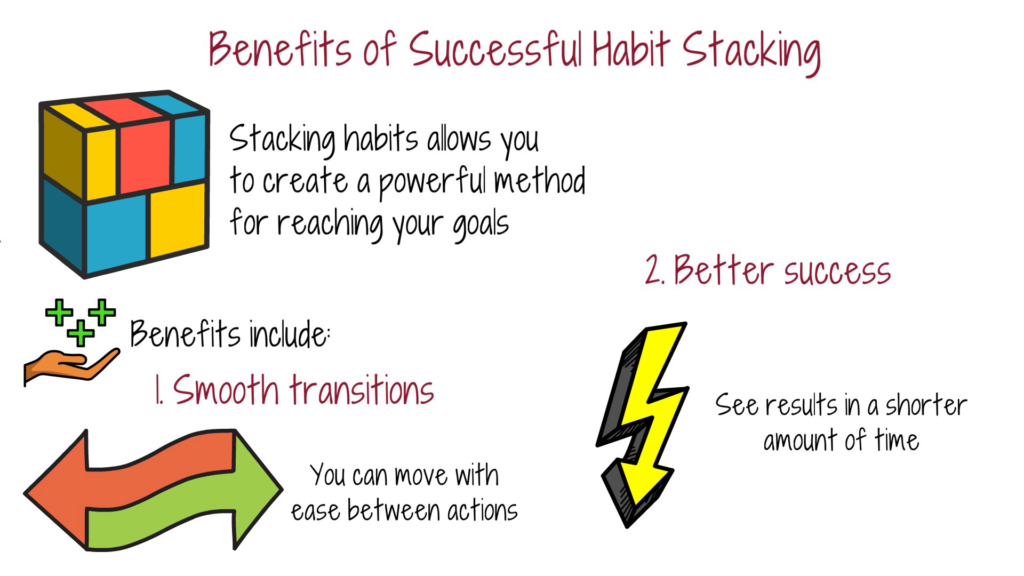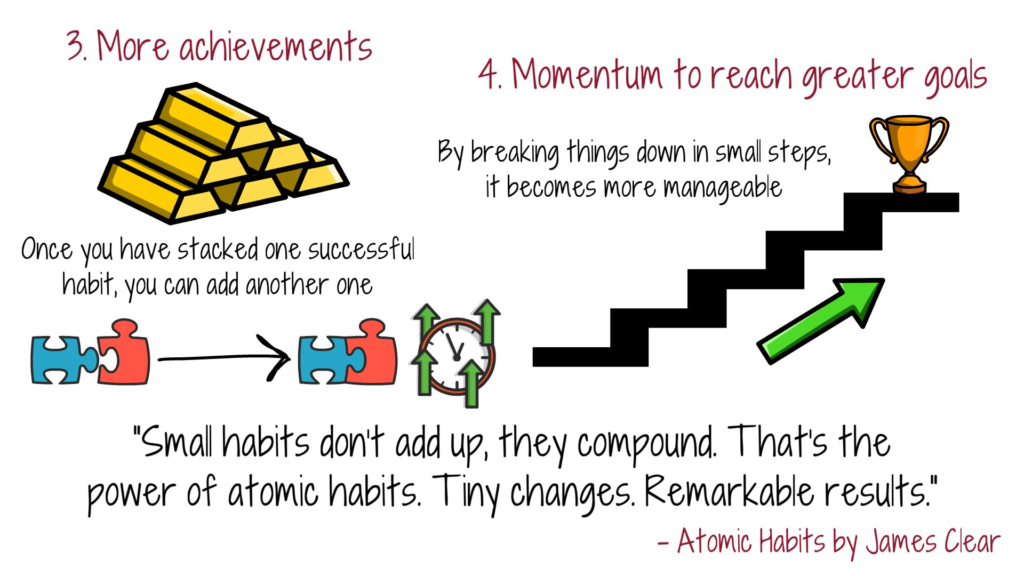Most people have regular routines and habits they do each day. And most of the time, we do them without thinking too much about it. Things like getting out of bed in the morning and having coffee, brushing our teeth, and getting dressed are common habits we do without a lot of preplanning.
Habits are established by consistently connecting neural pathways in our brains that create strong bonds. According to research at Oxford University, the average adult has 41% fewer neurons than the average newborn baby. So why aren’t babies smarter than adults?
The answer to that question is in a process known as “synaptic pruning.” The brain “prunes away” connections it isn’t using, and builds up the ones it’s using most often. So although babies have plenty of potential, they haven’t had time yet to create strong connections in all areas. Adults on the other hand, have chosen specific connections they wish to strengthen, and let some of the others go away.
Behaviors become habits. And most of the time, habits become so ingrained in us, that they become more or less automatic. The formula: B = M+A+P, (Behavior = Motivation + Ability + Prompts) defines how habits form. A behavior can become a habit by:
- Having the motivation to do something
- Having the ability to do it
- Having regular prompts that spur you to action.
But just having random behaviors and habits doesn’t necessarily bring you closer to a goal. What if your habits could be more intentional? How could we make them work in our favor? B.J. Fogg, director of the Behavior Design Lab at Oxford University, created the term “Habit Stacking” as part of his “Tiny Habits” program. So, what is Habit Stacking? And how can it help you reach your goals more easily, and in less time?
What is Habit Stacking?
Habit stacking is a way to use an already established habit, and tie a new habit to it. When you attach a new habit to something you’re already doing, it adds strength to the trajectory of your goal.

A habit is something that is well established. It’s something you do often, and usually without a lot of thought. So it’s a perfect opportunity to use that prompt to trigger your next habit. Trying to create a new habit on its own can take a long time. But when you attach the next step to something you’re already doing, you can begin making progress right away.
Habit stacking is an effective way to build new behaviors. Dive deeper into this concept in our Habits and Behavior Guide.
For example, think of a habit you already do, like taking a shower. Then attach your new habit to the old one. Say, “after I take a shower, I will (and fill in the blank)“. Maybe you want to start having your bedroom more orderly. Making your bed each day could be the next habit you want to cultivate. So now your phrase might read, “After I take a shower, I will make my bed.” Now the next habit is more of an extension of the first, and can be easily followed.
Author James Clear wrote,
“All big things come from small beginnings. The seed of every habit is a single, tiny decision.”
How to Get Started
Implementation Intention is a similar means of habit stacking. This concept was introduced in 1999 by psychologist Peter Gollwitzer. It’s a form of habit stacking using the “If-Then” plan. For example, using this plan you make a statement like, “If (situation happens), I will (new behavior).“

Ph.D. Melissa Ming Foynes explains,
“In simple terms, an implementation intention is just a plan of when and where you will do something.”
She continues,
“With habit stacking, the current habit becomes a cue to engage in the new action.”
Fill in the blanks, “After I _(old habit)__, I will _(new habit)_”. It’s simple. By using forethought to arrange the right combination of habits to attach to each other, you may find moving from one task to the next becomes a way to flow with ease.
To begin, be specific about your goal. Rather than something vague like, “After I get home, I will relax”, try “After I get home from work, I will take off my shoes, sit in my favorite chair, and sip water for 5 minutes.”
It is recommended to start with a short goal of 2- 5 minutes to start, and then expand if needed.
It can be overwhelming to try to add too much at once. For example, if you want to add some exercise habits to your day, try adding one 2-5 minute activity. Then once that becomes comfortable and routine, you can add more, eventually reaching a half hour workout.
When planning how to start habit stacking, consider a few guidelines:
- Specify a behavior you want to create as a habit
- Figure out what small step you could take to move in that direction
- Identify where an anchor occurs naturally in your life
- Make a commitment to hold the new habit in place.
Stacking Similar Habits
Make the new habit somewhat in the same gear as the old habit. Our brains don’t like to switch focus that quickly, so stay in the same vein for best results. Stick with a similar topic.

For example, read and then meditate. Do yoga and then go for a walk. Rather than trying to clean the kitchen and journal for 5 minutes.
This is where it helps to find the “anchor” or motivating current habit, to attach the new habit to. For example, if keeping the kitchen clean is a new goal for you, then the anchor might be that when you finish your morning coffee (old habit), you immediately wash your cup and put it away (new habit). By making the new habit related to the anchor habit, it becomes much easier to make it a continuation of something you’re already doing.
Avoid the Pitfalls
Be realistic about when and how you will add new habits. If your house is chaotic and busy in the afternoons, it’s probably not the best time to try adding meditation to your routine. Likewise, if you’re not a morning person, don’t over plan a schedule that isn’t doable at that time of day when you’re already pressed for time.

Know yourself. If you try to force yourself to do something you really dislike, and attach it to a previous habit, you may end up ditching the original habit just to avoid the new one. Make your new habits something you really want and can fit into your day. Being excited and motivated about the goals you choose and the habits you create to reach those goals, can make a difference in whether or not you succeed.
Be consistent. If you miss a day, get right back on track. Actions need to be repeated over and over to become habits. People often have good intentions but fail to act on them. If you want something to become a habit, be sure to stick with it.
Benefits of Successful Habit Stacking
Once you get the idea of stacking habits, and understand the way it works, you can start to create a powerful method for reaching your goals.
By using one habit to add a new one, you might find that the new habit becomes part of the daily plan quickly and easily.


Benefits include:
- Smooth transitions: when you attach a new habit to an already established similar habit, you can move with ease between actions
- Better success: When your new goal can be reached with less effort, you will likely see results in a shorter amount of time
- More achievements: Once you have stacked one successful habit, you can add another one
- Momentum to reach greater goals: Once you begin having success with one habit, and move closer to your overall goal, you may feel inspired to do more. By breaking things down in small steps, it becomes more manageable.
Final Thoughts
In his book, Atomic Habits, James Clear writes,
”Small habits don’t add up, they compound. That’s the power of atomic habits. Tiny changes. Remarkable results.”
Building powerful habits by habit stacking might just be the system you’ve been looking for. Once you learn the technique of connecting a new habit to something you’re already doing, you may find you achieve your goals in less time than you ever imagined possible.
